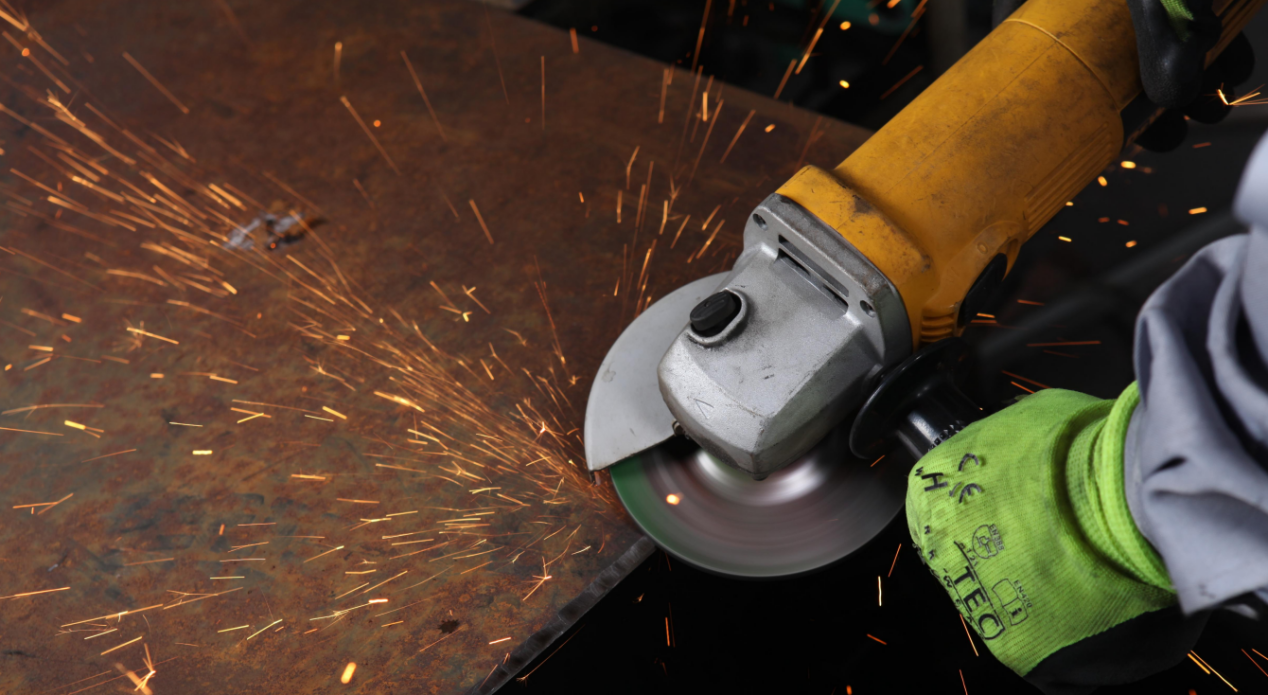During the cutting and grinding process, the state of the working surface of the cutting-off wheel constantly changed due to the wear of the itself. With the extension of the cutting and grinding time, the grinding ability of the cutting discs decreases, and various grinding defects continue to appear, so that the cutting process cannot continue. Here let we analyze where the causes of wear comes from follow aspects:
- Wear and tear
- Oxidative wear
- diffusion wear
- Thermal stress damage
Generally, it is carried out through observation and testing according to various phenomena produced by the wear of the working face of the metal cutting tools.
The cutting phenomena produced by the wear of the cutting discs mainly include:
- self-excited vibration, and regenerated vibration lines on the surface of the workpiece;
- cuttingburns on the surface of the workpiece;
- sharp increase or decrease in cutting/grinding force;
- decreasedgrinding accuracy;
- increased grinding surface roughness.
Main Reasons for wheel wear:
- Wear and tear
When the abrasive grains are severely worn, the surface of the grinding disc is flat after an obvious wear plane appears on the top surface of the abrasive grains. At this time, the total wear area of the cutting edge increases, the friction intensifies, and it is difficult for the cutting edge to cut into the surface of the workpiece. However, the hardness of the grinding wheel is too high, so that the abrasive particles cannot be broken and fallen off in time. If you continue to use it, the cutting force and grinding heat will increase significantly, and there will be obvious vibration and noise, and the material cannot be removed effectively. At this time, the grinding wheel must be dressed. This wear generally occurs when the hardness of the abrasive grains is low, the hardness of the grinding wheel is high, the grain size of the abrasive grains is too fine, and the tensile strength of the workpiece material is high. This is the most common cause of the end of wheel life when machining normal steels under normal grinding conditions.
、
- Oxidative wear
Common abrasives of grain cutting tools are oxides, carbides and nitrides. Oxide abrasives are stable in air, and the surface of other abrasives will be oxidized at high temperature, and even be gradually consumed.
- Diffusion wear
It refers to the wear caused by the weakening of the surface layer of the abrasive particles caused by the mutual diffusion of the elements of the diamond cutting discs when the abrasive particles are in contact with the material to be ground at high temperature. The interdiffusion of elements between the two materials is closely related to the chemical composition of the materials. Since the ability of carbon in diamond abrasives to diffuse and dissolve in iron is greater than that of boron nitride abrasives, diamond grinding wheels are not suitable for grinding steel.
For more information:
- Thermal stress damage
During the grinding process, the working surface of the abrasive grains instantly rises to high temperature, and the metal cutting wheel for grinder is rapidly cooled under the action of the grinding fluid. Thermal stress cracks and shatters the surface of the abrasive grains. The thermal stress damage mainly depends on the thermal conductivity parameters of the abrasive, the coefficient of linear expansion and the properties of the grinding fluid. The smaller the thermal conductivity, the lower the coefficient of linear expansion. The larger the coefficient of linear expansion, the better the cooling performance of the grinding fluid, the greater the thermal stress, and the easier it is for the abrasive particles to be cracked and broken by thermal shock. The order of the thermal conductivity of various abrasives is diamond, cubic boron nitride, silicon carbide, corundum.
Conclusion
All in all, the main causes of wheel wear normally depend on the wheel abrasive, workpiece material and grinding conditions, so the reasonable selection of the cutting-off wheel and the dressing accuracy of the grinding wheel will greatly affect the contour accuracy of the workpiece. For more information, please contact us. BINIC – steel cutting disc factory and coated abrasives manufacturer.


